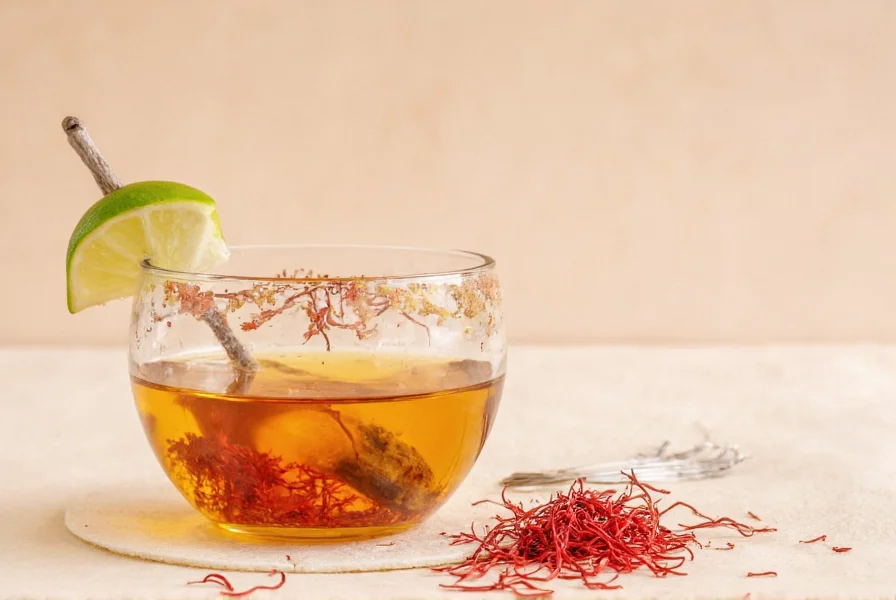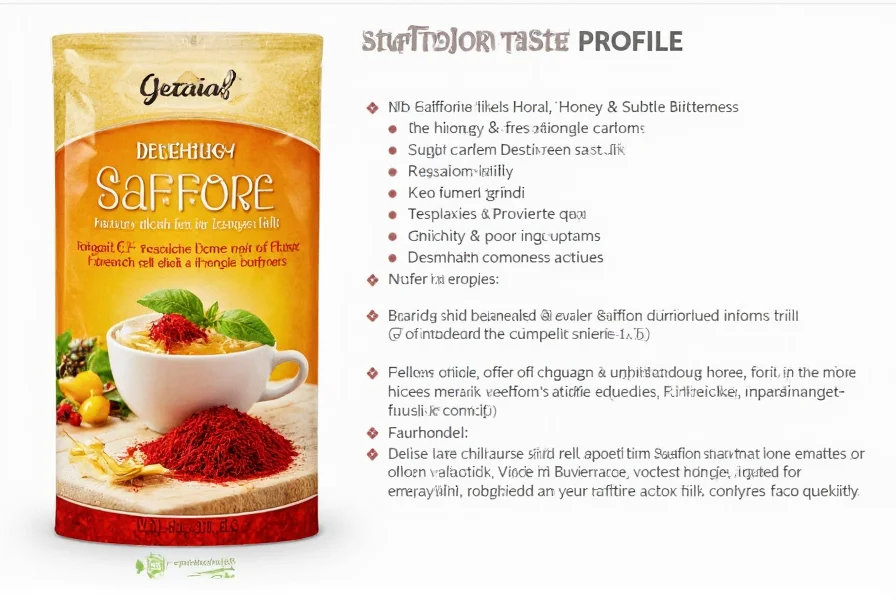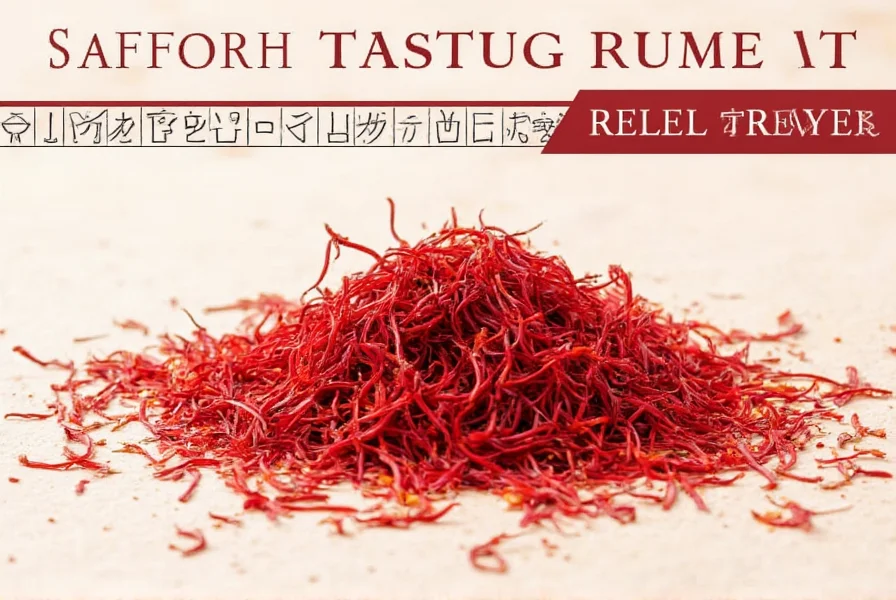Saffron's taste experience is unlike any other spice, creating an immediate sensory impression that defines many world cuisines. When properly prepared, saffron releases a complex bouquet that begins with floral notes reminiscent of fresh hay, followed by subtle honey sweetness, and finishes with a characteristic gentle bitterness that balances the overall flavor profile. This distinctive combination makes saffron instantly recognizable to experienced palates and explains why it remains the world's most valuable spice.
Understanding Saffron's Sensory Profile
The taste of saffron isn't merely about flavor—it's a multi-dimensional sensory experience. When you place a single saffron thread on your tongue, you'll first notice a subtle earthiness, followed by floral notes that evolve into a honey-like sweetness. The finish reveals saffron's signature characteristic: a pleasant, restrained bitterness that shouldn't be overpowering in high-quality specimens. This balanced bitterness is actually desirable and indicates authenticity, as counterfeit saffron often lacks this nuanced finish or presents an artificial, harsh bitterness.
Saffron's aroma is equally important to its overall sensory profile. Properly stored saffron emits a distinctive hay-like fragrance with subtle iodine notes—this is completely normal and indicates freshness. The aroma intensifies when saffron threads are crushed or soaked in warm liquid, releasing the compounds responsible for its characteristic flavor.
What Creates Saffron's Unique Taste?
The distinctive taste of saffron comes from three primary chemical compounds:
| Compound | Contribution to Flavor | Percentage in Saffron |
|---|---|---|
| Crocin | Provides color and subtle sweetness | Approximately 8% |
| Picrocrocin | Responsible for saffron's characteristic bitter taste | Approximately 10% |
| Safranal | Creates the distinctive aroma and floral notes | Approximately 2% |
These compounds work together to create saffron's signature flavor profile. Picrocrocin, which breaks down into safranal when dried, is particularly important—it's the compound that gives saffron its characteristic bitter finish. The concentration of these compounds varies based on growing conditions, harvest timing, and processing methods, which explains why saffron from different regions has subtle flavor variations.

Saffron Taste Compared to Common Substitutes
Many people wonder how saffron tastes compared to turmeric or other yellow-colored spices. While turmeric provides color similar to saffron, its flavor profile is completely different—earthy, slightly bitter, but lacking saffron's floral complexity and delicate sweetness. Paprika offers a different kind of earthiness with smoky or sweet notes depending on variety, but none of the floral characteristics that define saffron.
When evaluating authentic saffron taste characteristics, look for these key differences:
- Genuine saffron has a complex flavor that evolves on the palate, while substitutes often have one-dimensional taste
- Real saffron's bitterness is subtle and balanced, whereas fake saffron often has harsh, chemical-like bitterness
- Authentic saffron releases its flavor gradually when soaked, while substitutes may discolor food immediately without developing flavor
How Preparation Methods Affect Saffron's Flavor
The way you prepare saffron dramatically impacts how its flavor manifests in your dishes. Understanding how saffron tastes in food depends on proper preparation techniques:
Dry-toasting: Gently toasting saffron threads before use intensifies the floral notes and reduces moisture content, creating a more concentrated flavor. This method works well for rice dishes where you want pronounced saffron character.
Soaking in liquid: The most common preparation method involves soaking threads in warm water, broth, or milk for 15-30 minutes. This gradual release creates a more balanced flavor profile where all elements—sweetness, floral notes, and bitterness—integrate harmoniously. The liquid becomes infused with saffron's compounds, distributing flavor evenly throughout the dish.
Grinding: Grinding saffron threads into powder just before use maximizes surface area and accelerates flavor release. This method works well for quick-cooking dishes but requires careful measurement as ground saffron is more potent.

Regional Variations in Saffron Flavor
Not all saffron tastes identical. The terroir where saffron is grown affects its flavor profile:
- Iranian saffron: Typically has the most intense flavor with pronounced floral notes and balanced bitterness
- Spanish saffron: Often milder with slightly sweeter profile, making it versatile for both savory and sweet applications
- Kashmiri saffron: Known for deep color and complex flavor with distinctive earthy undertones
- Greek saffron: Generally has a robust flavor with slightly more pronounced bitterness
These regional differences explain why chefs sometimes specify saffron origin in recipes—they're selecting for particular flavor characteristics that complement their dish.
Using Taste to Verify Saffron Quality
Your tongue can be a powerful tool for identifying authentic saffron. When evaluating saffron quality through taste:
- Place a single thread on your tongue—real saffron will gradually release flavor over 15-20 seconds
- High-quality saffron presents a complex flavor journey: initial earthiness, followed by floral notes, then honey sweetness, finishing with subtle bitterness
- Avoid saffron that immediately dyes your tongue bright yellow—that's likely adulterated with food coloring
- Authentic saffron shouldn't taste metallic or chemical—these indicate poor quality or counterfeit product
The bitterness in genuine saffron should be present but restrained—like the bitterness in dark chocolate that enhances rather than dominates. Excessive bitterness often indicates improper drying or storage.
Best Culinary Applications for Saffron's Flavor
To truly appreciate what saffron tastes like in context, try it in these classic preparations that showcase its unique flavor profile:
- Spanish paella: Saffron's floral notes complement seafood while its bitterness balances rice's starchiness
- Italian risotto alla Milanese: The spice's subtle sweetness enhances the creamy rice texture
- Swedish saffron buns: Demonstrates how saffron's flavor works in sweet applications
- Indian biryani: Shows saffron's ability to cut through rich spices without competing
- Persian tahdig: Highlights saffron's transformative effect on simple rice dishes
When cooking with saffron, remember that less is often more. Its flavor intensifies during cooking, and too much can make dishes unpleasantly bitter. Start with small amounts (typically 10-20 threads for 4 servings) and adjust based on your saffron's potency and personal preference.
Common Misconceptions About Saffron's Taste
Several myths persist about saffron's flavor that deserve clarification:
- "Saffron should taste sweet": While it has honey-like notes, saffron isn't primarily sweet—it's the balance between floral, earthy, and bitter elements that defines it
- "Bitterness means bad saffron": Proper bitterness is essential to saffron's character; completely sweet saffron is likely adulterated
- "Saffron tastes like vanilla": While both are floral, vanilla is distinctly sweet and creamy while saffron has complex earthy and bitter notes
- "More threads mean better flavor": Excessive saffron creates overwhelming bitterness; quality matters more than quantity
Conclusion
Understanding saffron's taste goes beyond simple description—it's about appreciating the complex interplay of floral, sweet, earthy, and bitter elements that make this spice irreplaceable. The distinctive flavor of saffron transforms ordinary dishes into extraordinary culinary experiences when used properly. By recognizing authentic saffron's characteristic taste profile and learning how to maximize its flavor potential, home cooks and professional chefs alike can unlock saffron's full culinary possibilities. Remember that quality matters more than quantity—properly prepared high-quality saffron used in appropriate amounts creates dishes with nuanced, sophisticated flavors that cheaper substitutes cannot replicate.











 浙公网安备
33010002000092号
浙公网安备
33010002000092号 浙B2-20120091-4
浙B2-20120091-4